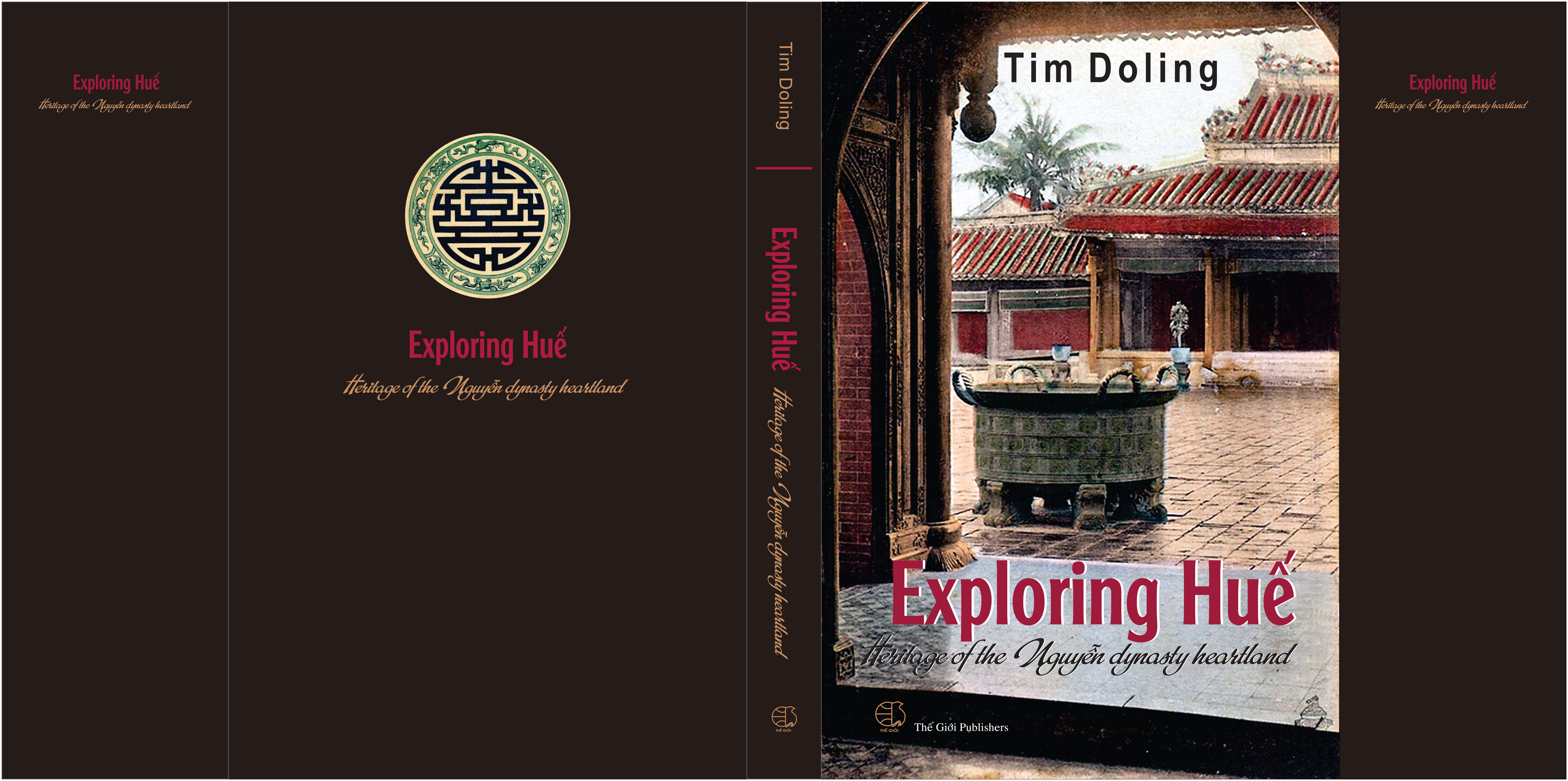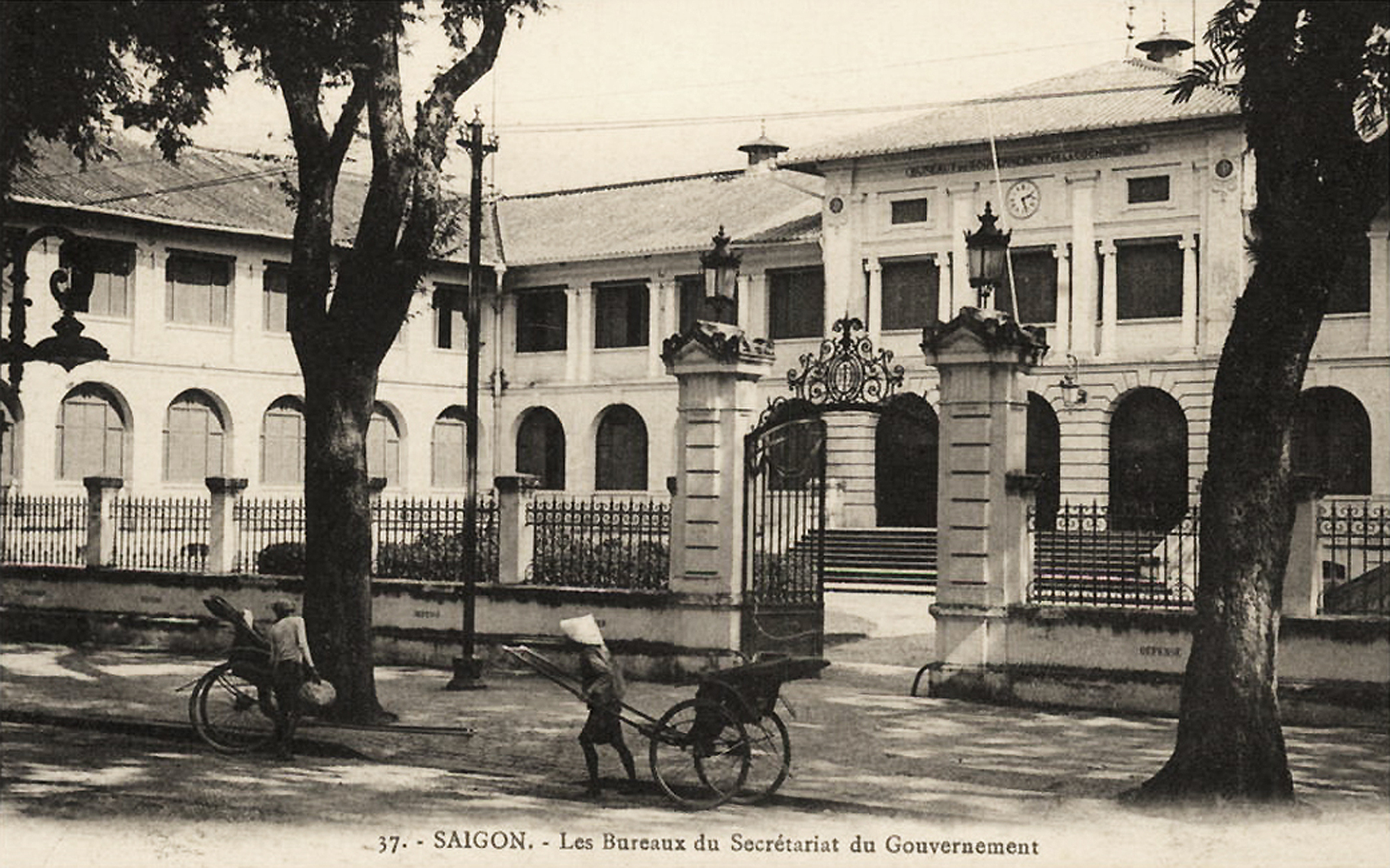
The project to build a new City Administration Centre behind the Hồ Chí Minh City People’s Committee involves the destruction of several heritage buildings. The art deco office and apartment block at 213 Đồng Khởi was demolished in mid 2014 to make way for a “faux colonial” extension to the 1909 City Hall, and now, after several changes of plan, the old French government building at 59-61 Lý Tự Trọng has also been condemned to destruction.
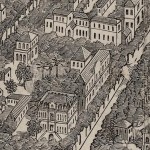
The earlier Direction de l’Intérieur as depicted in the 1881 engraving, Saïgon d’après nature
Many of us pass it every day and scarcely give it a second look. Yet the building which houses the Hồ Chí Minh City Department of Information was once a focus of French colonial power second only to the Governor’s palace.
The earliest French government building on this site was the Hôtel de la direction de l’intérieur (Office of the Direction of the Interior), constructed by the Cochinchina authorities in the early 1860s. Although no photographs of the building have survived, it was depicted clearly in the remarkable 1881 engraving, Saïgon d’après nature.
However, a larger headquarters was soon required, so in 1875, at a total cost of 108,000 francs, the current structure was built to a design by then Director of Civic Buildings, Marie-Alfred Foulhoux (1840-1892) – the same Foulhoux who later designed the Palais de justice, the Customs Directorate, the Lieutenant Governor’s Palace and the Saigon Post Office. For more details of Foulhoux’s work, see the article Foulhoux’s Saigon.
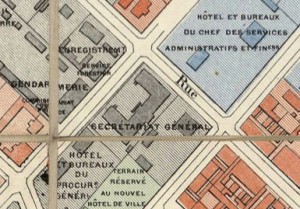
The Hôtel de la direction de l’intérieur compound as it appears on an 1890 map of Saigon
The work was extensively refurbished in 1881, and in the following year, the Dictionnaire Véron, ou mémorial de l’art et des artistes de mon temps, by Théodore Véron (Poitiers, 1882), described it as follows:
FOULHOUX (Alfr.). – “Office of the Direction of the Interior in Saigon (French Cochinchina)”. In front, three building components with triangular pediments supported by small columns. At the façade of the monument, two entrance gates with curved iron gates, lit at night, by two gas lamps on pilasters. The main entrance gate at the centre has nothing more salient than those of the two pavilions on the right and left, other than two statues at their bases, one on each side. In short, this facade, with its simple and pure lines, has a monumental look.
The Hôtel de la direction de l’intérieur was second in importance only to the Governor’s palace in colonial Saigon. According to Louis de Coincy’s book Quelques mots sur la Cochinchine en 1866 (A few words about the colony in 1866), the Department of the Interior, then at 27 rue de Lagrandière, was “responsible for the entire civil, judicial and financial administration of the colony,” and was represented throughout Cochinchina by provincial Inspectors of Indigenous Affairs.
In 1888, it was renamed the Secrétariat général du gouvernement de la Cochinchine. By the early 20th century, it was often known by the alternative names of Bureaux du gouvernment or Bureaux des Services civiles.
Following the Second World War, the French briefly set up a Ministère de l’Intérieur (Interior Ministry) in the compound for the short-lived State of Việt Nam.
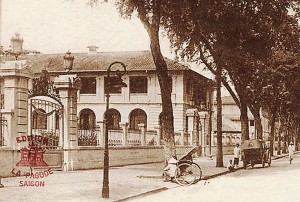
The renamed Secrétariat général du gouvernement de la Cochinchine compound in the early 20th century
However, after 1955 a new Bộ Nội vụ (Interior Ministry) was opened in the former Direction de la Police et de la Sûreté compound at 164 Tự Do and 59-61 Gia Long (as it then became known) was transformed into the South Vietnamese Ministry of the Economy (Bộ Kinh tế).
In 1958 the compound made a fleeting appearance in Joseph L Mankiewicz’s film version of Graham Greene’s novel The Quiet American.
The compound currently serves as the headquarters of the Department of Information and Communications (Sở Thông tin và Truyền thông) and the Department of Trade and Industry (Sở Công thương).
In December 2014, the Hồ Chí Minh City People’s Committee announced that it had launched a competition to select a design for the new building “which will achieve the highest requirements, the optimal location in the most solemn part of the city, with architectural harmony between works to be preserved and embellished and those to be built new, in harmony with the architecture of the surrounding area.” Eleven designs were eventually shortlisted and placed on public view in the Hồ Chí Minh City Exhibition Centre, with the intention of canvassing public opinion on which one was best.
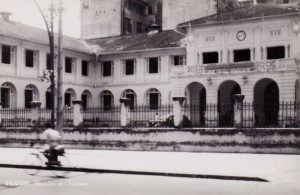
In the late 1940s the compound briefly served as the Interior Ministry of the State of Việt Nam
In the wake of this exhibition, no first prize was awarded, but by October 2015 it was implied that the judges’ “second choice” design by the Nikken Sekkei company would be selected for implementation. This scheme involved preserving the old French government building at 59-61 Lý Tự Trọng by cutting it into three pieces and physically moving it 100m southwest of its present location, so that it was in line with the central axis of the City Hall.
Nothing was then heard of the project until April 2018, when it was announced that an entirely different scheme by American design and architecture firm Arthur Gensler Jr. & Associates, Inc would be placed on public view for consultation. Unlike the Nikken Sekkei scheme, the Gensler design dispensed with the 130-year-old Secrétariat général building altogether.
This will be the third major Saigon heritage building destroyed to make way for a Gensler project. It follows the destruction in 2010 of the old Contrôle financier building (12 Lê Duẩn) to make way for the stalled Lavenue Crowne project and the demolition in 2015 of the old Grands Magasins Charner (Tax Trade Centre) to make way for a new 46-storey commercial complex and metro station.
UPDATE: In early August 2018, following an online petition which attracted over 6,500 signatures, the HCMC Department of Planning and Architecture recommended to the HCMC People’s Committee that this building should after all be preserved and recognised as a historic monument.
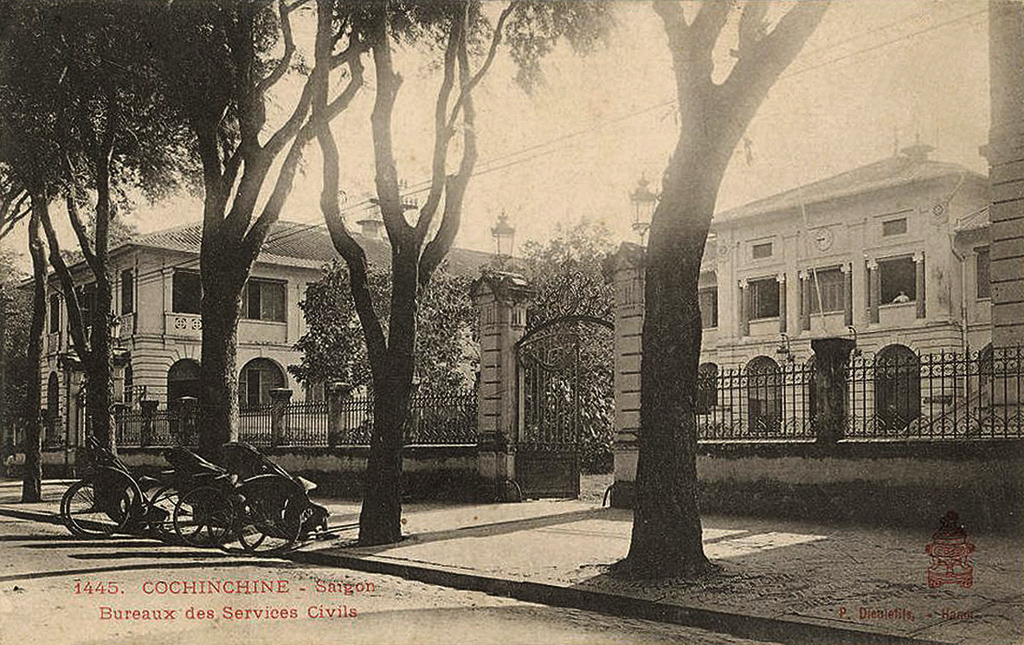
The Secrétariat général du gouvernement de la Cochinchine building in the early 1900s
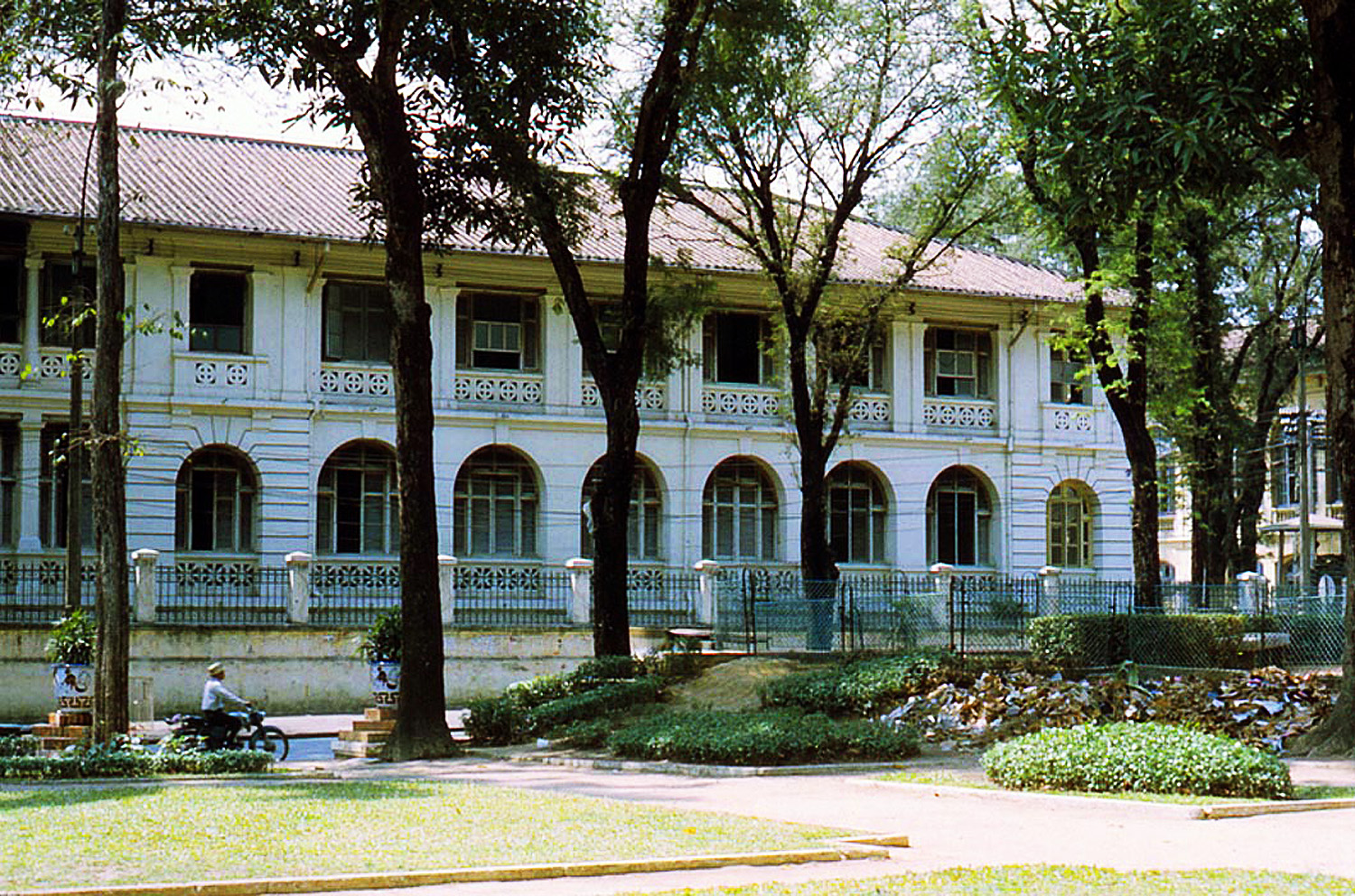
The building serving as the South Vietnamese Ministry of the Economy (Bộ Kinh tế) in the 1960s
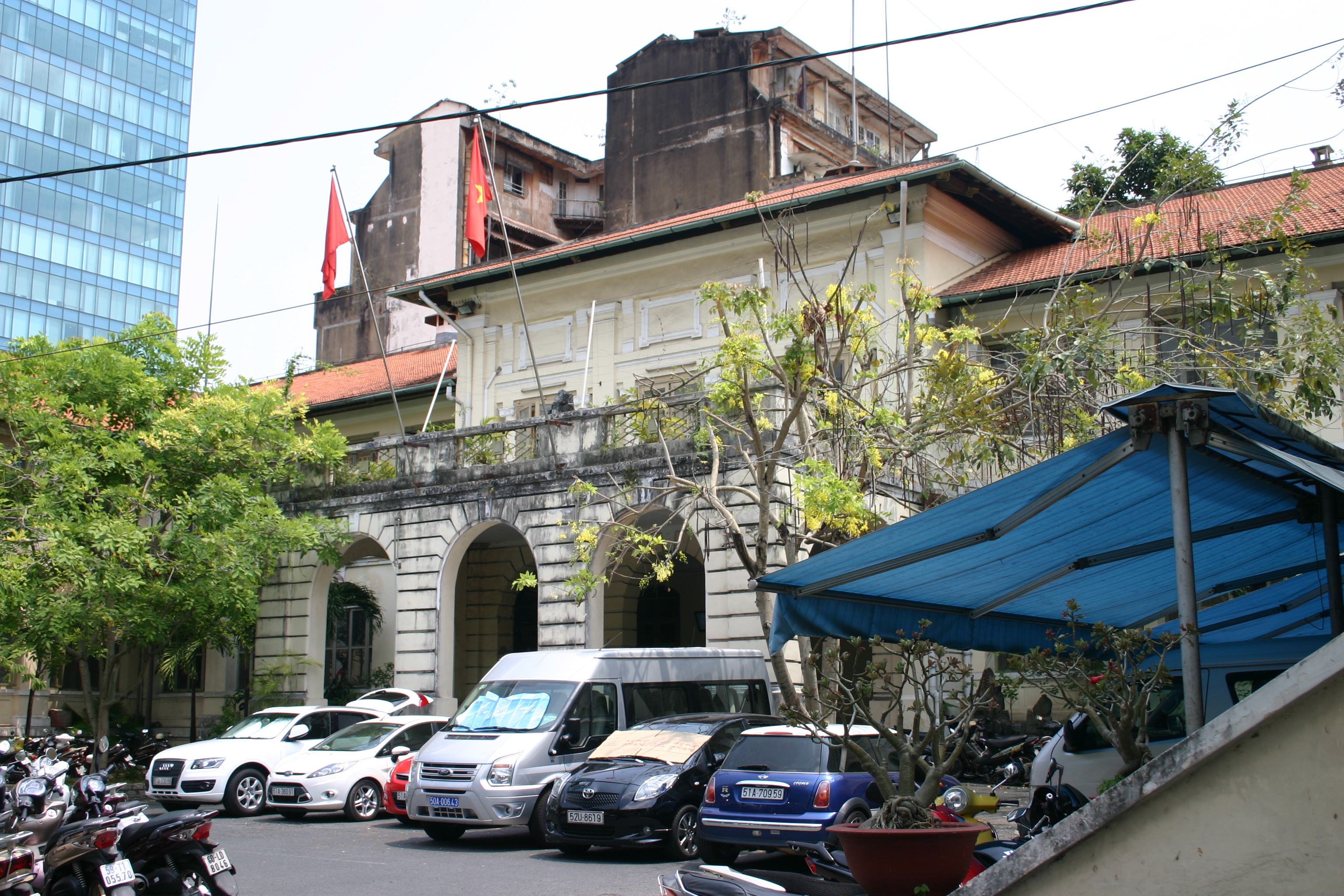
Today the building houses the Department of Information and Communications (Sở Thông tin và Truyền thông) and the Department of Trade and Industry (Sở Công thương).
Tim Doling is the author of the guidebook Exploring Saigon-Chợ Lớn – Vanishing heritage of Hồ Chí Minh City (Nhà Xuất Bản Thế Giới, Hà Nội, 2019)
A full index of all Tim’s blog articles since November 2013 is now available here.
Join the Facebook group pages Saigon-Chợ Lớn Then & Now to see historic photographs juxtaposed with new ones taken in the same locations, and Đài Quan sát Di sản Sài Gòn – Saigon Heritage Observatory for up-to-date information on conservation issues in Saigon and Chợ Lớn.


